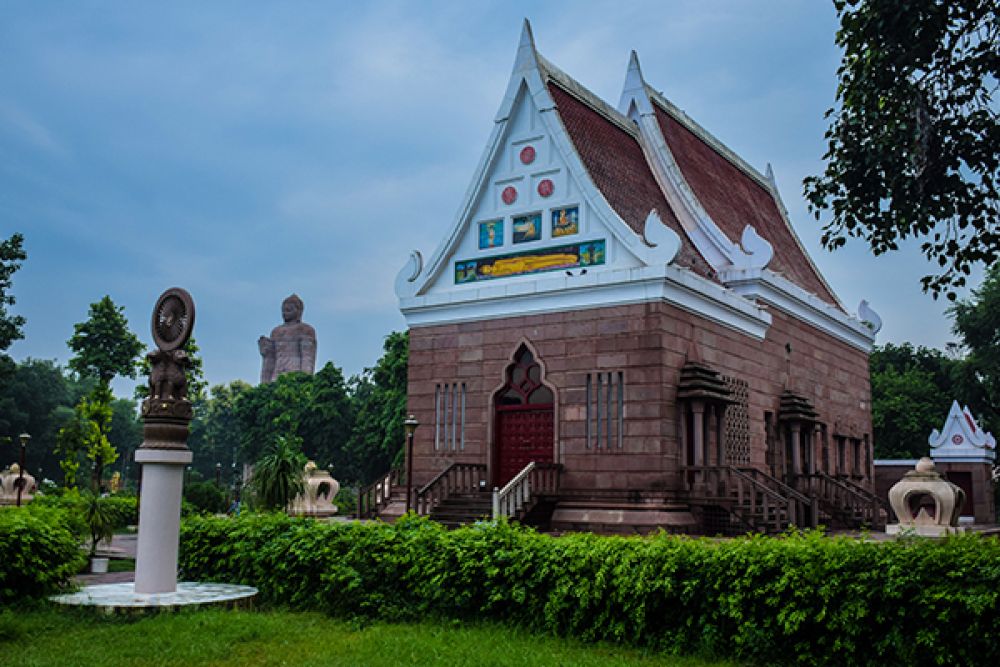

The Thai Temple in Sarnath, located in the state of Uttar Pradesh in India, stands as a beacon of peace and spirituality for visitors from around the world. Sarnath itself is a place steeped in religious significance, heralded as the site where Lord Buddha delivered his first sermon after attaining enlightenment. Over the years, it has evolved into a revered pilgrimage destination for Buddhists and a locus of international tourism.
The history of tourism in Sarnath is closely tied to the spread of Buddhism. After Buddha's sermon in the Deer Park, Sarnath became a hub for his followers and saw the construction of numerous stupas and monasteries. Over the centuries, these sites underwent periods of growth and decline, experiencing destruction and restoration as empires rose and fell.
In the early 20th century, the site experienced a resurgence due to archeological efforts which unearthed relics, including the Ashoka Pillar and the famous Dhamek Stupa. The discovery piqued the interest of Buddhist communities globally, particularly from Southeast Asian countries like Thailand. The construction of the Thai Temple in 1931 solidified Sarnath's status as an important destination for religious tourism.
The Thai Temple, with its exemplary Thai architecture, golden spire, and vivid murals, showcases the cultural exchange between India and Thailand. It exemplifies the influence of Theravada Buddhism and attracts tourists not just for its religious importance, but also for its tranquil atmosphere and aesthetic appeal.
Tourism in Sarnath has blossomed as it caters to various interests. Pilgrims come to soak in the divine energy and to visit the Bodhi tree, a descendant of the one Buddha sat under. Meanwhile, cultural enthusiasts delve into the rich tales associated with the ancient ruins and artifacts housed in the Sarnath Archeological Museum.
Recent trends in Sarnath's tourism industry reveal a focus on sustainable and experience-based travel. Tourists are seeking authentic experiences, aiming to connect with the local culture and spirituality. Initiatives to preserve the historical sites and promote eco-friendly tourism practices are taking precedence, ensuring that Thai Temple and its surroundings remain unspoiled for future generations.
Moreover, modern amenities and improved connectivity have made Sarnath more accessible. The promotion of the Buddhist Circuit tourist train, connecting key places associated with Buddha’s life, is a testament to how tourism in the region is adapting to contemporary demands.
In the wake of global challenges such as pandemics, Sarnath's tourist industry has adapted by implementing health protocols and digitalizing visitor experiences where possible. Virtual tours and online resources have been developed, allowing people from across the globe to explore the serene ambiance of the Thai Temple and Sarnath's rich heritage digitally.
The Thai Temple in Sarnath is an enduring symbol of the shared heritage between India and Thailand and a prominent testament to Buddhism's universal teachings. The history and evolution of tourism at this sacred site depict a journey from ancient spiritual beginnings to a future of mindful and responsible tourism. Sarnath, with its blend of tranquility, culture, and history, continues to enchant visitors and pilgrims alike, securing its place as a timeless destination within India's vast and varied tourism tapestry.